This easy Chicken Pad Thai recipe stars rice noodles stir-fried with garlic and plenty of juicy chicken that all get tossed in a sweet and tangy homemade Pad Thai sauce. Pile on your favorite fresh veggies and chopped peanuts for a takeout-inspired feast your family will love.
And don’t miss all of my tips below on how you can swap in whatever noodles, veggies, and protein (think tofu, beef, shrimp or even pork) you have stashed in your pantry and fridge.
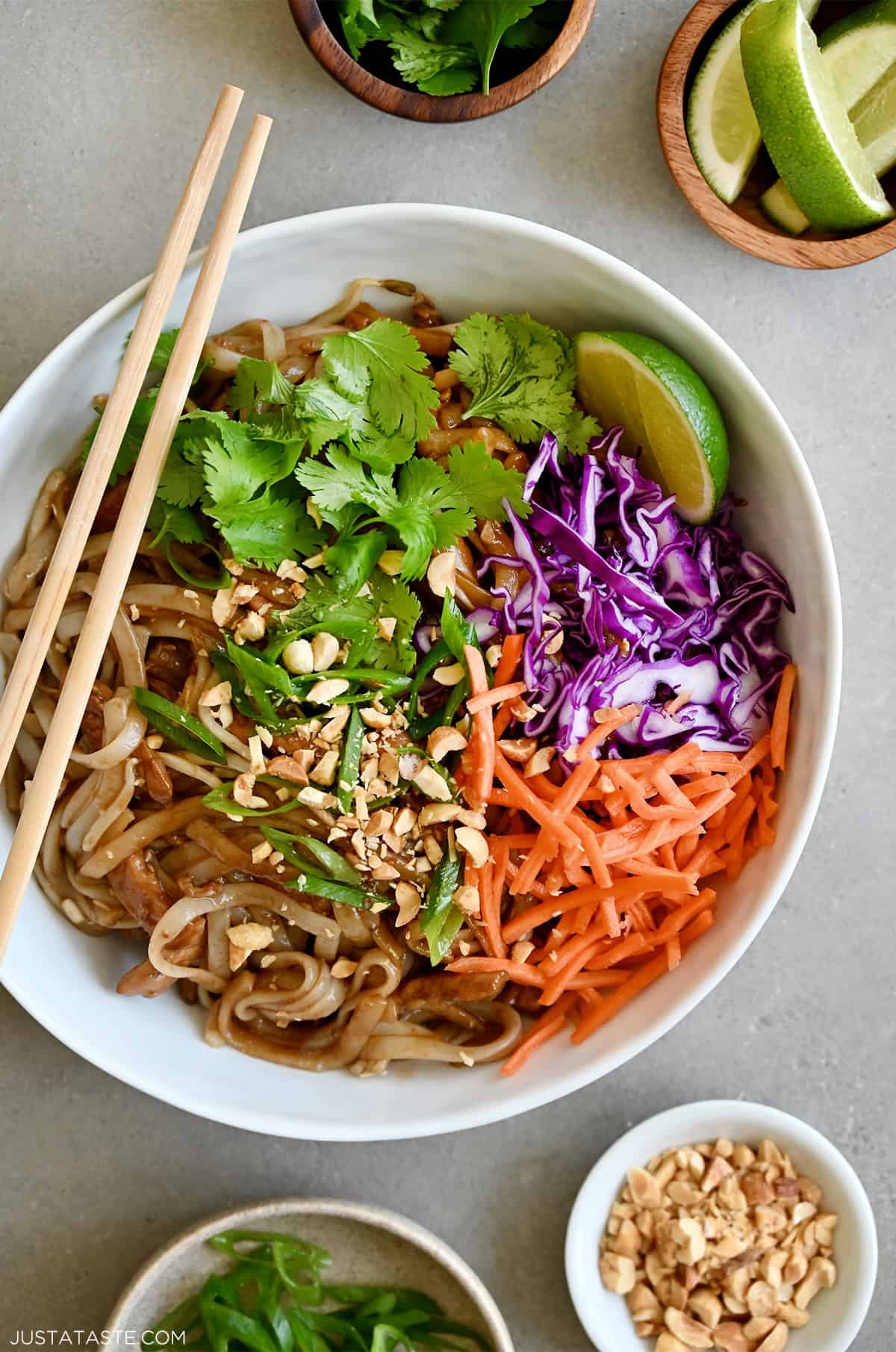
Table of Contents
Pad Thai ranks among my top three all-time favorite takeout dishes (the others being Mongolian Beef and Sticky Pineapple Chicken). There’s just something about rice noodles stir-fried with garlic and tossed in a sweet and tangy sauce that inspires me to order this dish time and time again.
What Is Pad Thai?
If you’ve never had this popular Thai noodle dish before, you’re definitely missing out! Authentic Pad Thai typically consists of stir-fried rice noodles, tofu, dried shrimp, bean sprouts, scrambled egg, and a sweet-savory-sour sauce made from tamarind paste, fish sauce and palm sugar. It’s often served with lime wedges, crushed peanuts and chili flakes on the side, allowing each person to customize the dish to their taste.
American-style Pad Thai often includes ingredients like ketchup and extra sugar to create a sweeter and less tangy flavor profile. You’ll also find it made with a wider variety of proteins (think chicken, beef, or even pork) and a generous amount of vegetables.
My easy recipe for homemade chicken Pad Thai is somewhere in the middle. I’ve kept the sauce relatively authentic, swapping in brown sugar because it’s more common. Plus, I’ve loaded it up with juicy chicken and a mix of fresh veggies for that perfect balance of flavors and textures. Whether you’re a Pad Thai purist or a fan of the American twist, this recipe is sure to satisfy your cravings!
Why You’ll Love This Recipe
- It’s fast, fresh and better than takeout (plus, it’s healthier!).
- It’s packed with juicy chicken and fresh vegetables.
- It features the best homemade Pad Thai sauce that’s tangy, salty and slightly sweet.
- It’s easily customizable with your favorite protein and veggies.
- You can make this recipe in a wok or large nonstick sauté pan.
Don’t let the list of ingredients fool you. Five of them are garnishes (in other words, optional!) and the other non-traditional ingredients can be found in most major supermarkets. Just soak the noodles, whisk together the sauce and then stir-fry it all together for the freshest, most flavorful takeout-fakeout win.
For the sauce, you’ll need:
- Tamarind concentrate/paste: This ingredient provides the signature tangy flavor of Pad Thai sauce. If you aren’t familiar with tamarind, it’s a tropical fruit with a tangy, sweet-sour flavor. You can usually find the concentrate or paste in the international foods aisle of your grocery store.
- Fish sauce: A staple in Thai cooking, that adds depth and umami to the dish.
- Sambal Oelek: This chili paste gives a subtle heat and adds complexity to the sauce. If you aren’t a fan of spicy food, start with half the amount I suggest—you can always add more later if you want to kick it up a notch.
- Light brown sugar: Adds sweetness. Traditional recipes call for palm sugar, but light brown sugar is a great substitute and more likely to be in your pantry.
- Black pepper: A pinch enhances the overall flavor.
For the noodles, you’ll need:
- Thai rice noodles: You can usually find these noodles in the international foods aisle of your grocery store.
- Boneless skinless chicken breasts: Cut into thin, 1-inch slices so they cook quickly and stay juicy and tender.
- Cornstarch: Helps to tenderize the chicken and keep it juicy.
- Low-sodium soy sauce: Adds a salty, savory element without making the dish too salty.
- Vegetable oil: For stir-frying. Any neutral-flavored oil with a high smoke point, such as peanut or canola oil, can be used.
- Garlic: Freshly minced garlic adds a robust, aromatic foundation to the stir-fry.
- Crushed red pepper flakes: Adjust the amount based on your spice preference.
- Fresh bean sprouts:
- Chicken stock: You’ll add a little at a time to the wok when stir-frying the chicken to keep it from drying out. Freeze the remaining stock in cubes to use later so it doesn’t go to waste!
- Veggies: I like a mix of carrots, red cabbage, cilantro and scallions, but use whatever you have stashed in your fridge. Bell peppers, snap peas and broccoli are all great options, too.
- Additional garnishes: Chopped peanuts and lime wedges. Peanuts bring a nutty crunch that’s iconic in Pad Thai.
See the recipe card for full information on ingredients and quantities.
Make sure you have all of your ingredients prepped and ready to go before you start cooking. This is a fast recipe that comes together in less than 10 minutes once the garlic hits the pan.
- Make the sauce. In a medium bowl, whisk together the tamarind concentrate with ½ cup warm water. Make sure your tamarind concentrate is fully dissolved in the water before whisking in the remaining sauce ingredients. Set aside.
- Soak the noodles. Follow the package instructions for soaking the rice noodles. Typically, they need to be soaked in hot water for 5-10 minutes until tender but still firm. Over-soaked noodles can become mushy when stir-fried so don’t overcook them.
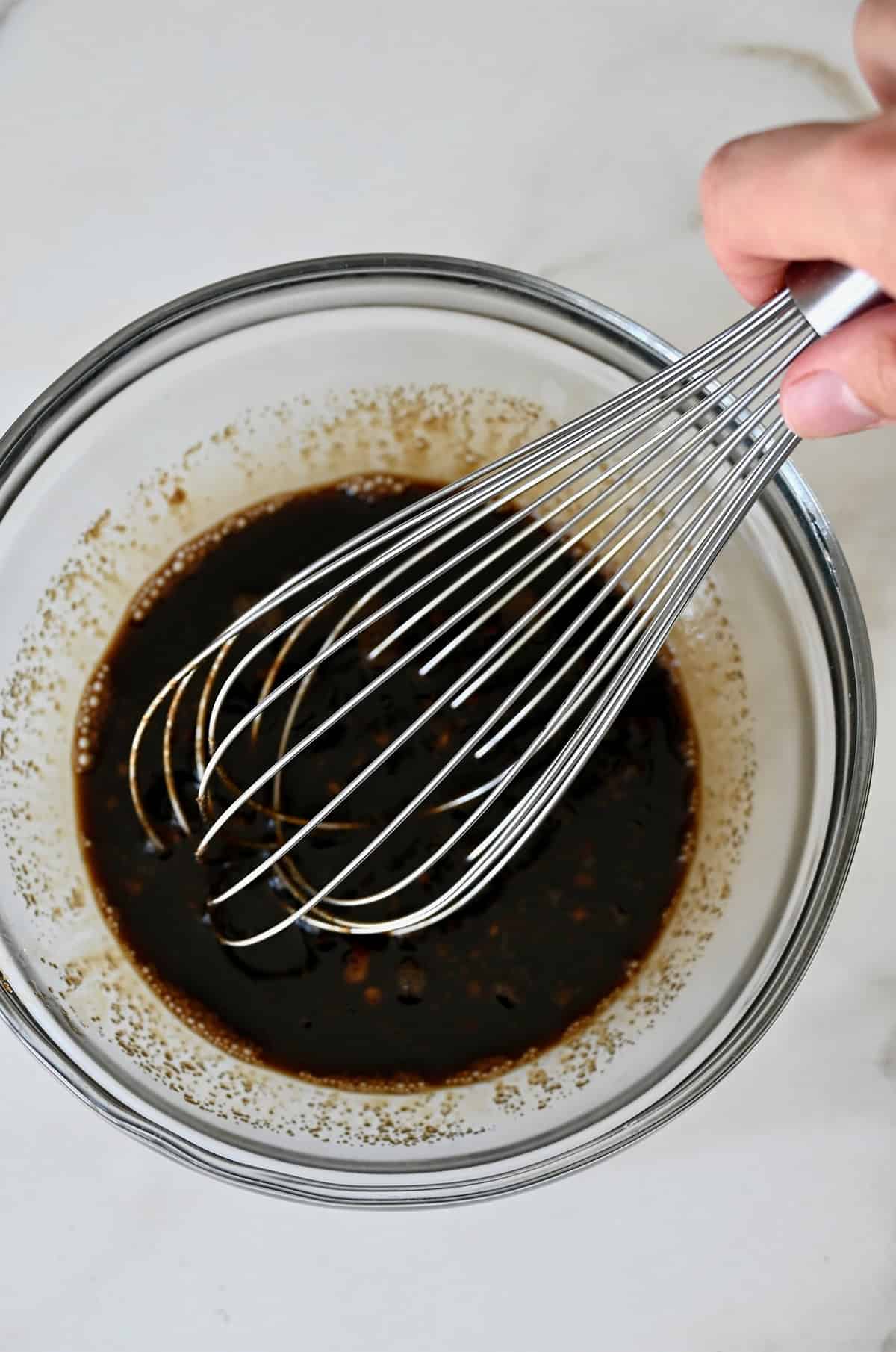
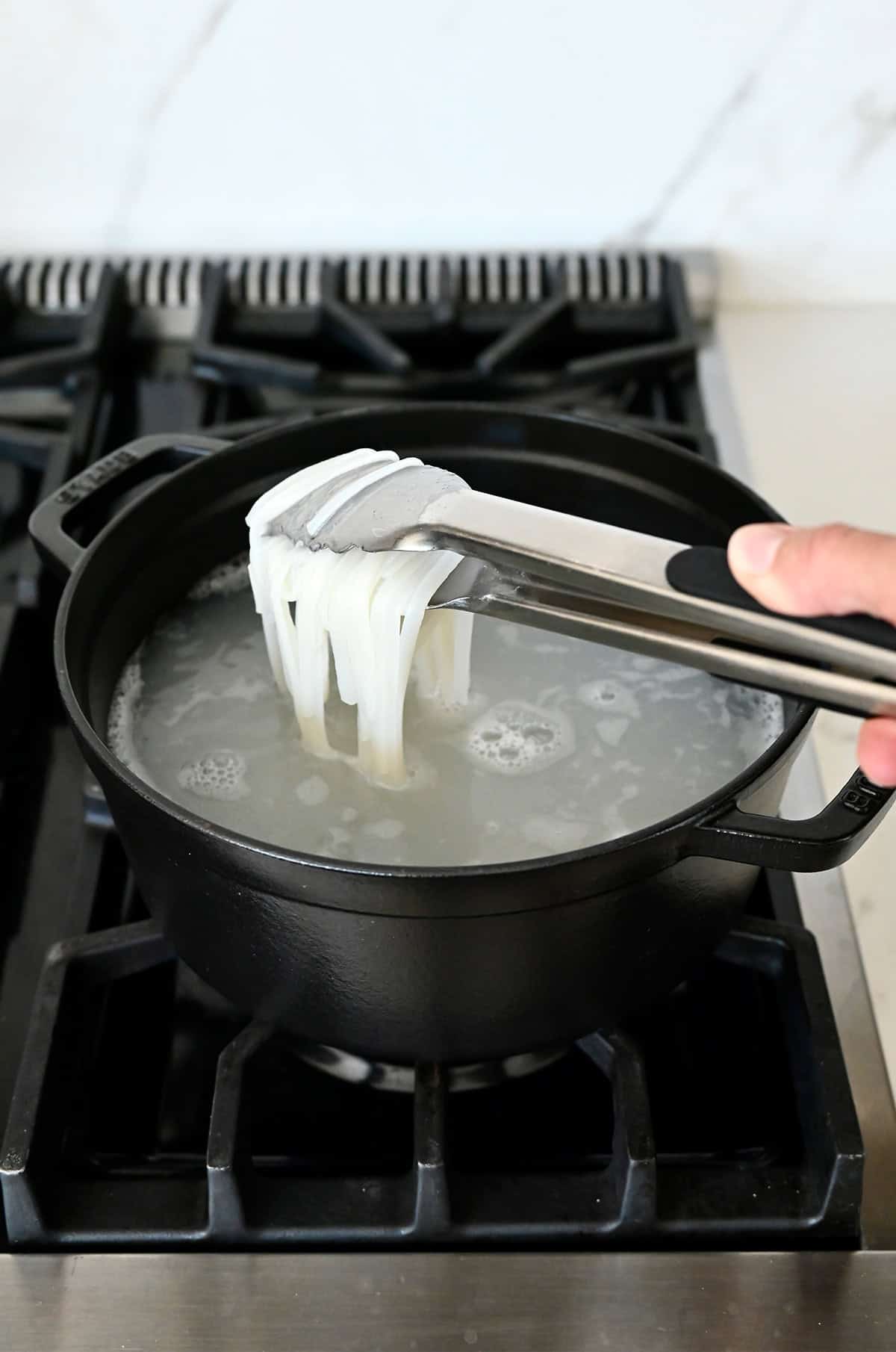
Kelly’s Note: If you’re using linguine or another pasta, cook them until they’re barely al dente.
- Drain and rinse noodles with cold water to prevent them from sticking together.
- Velvet the chicken. Velveting is a technique used in Chinese cuisine to keep meat tender and juicy during stir-frying. This simply means you’ll coat the chicken in cornstarch and, in this recipe, soy sauce.
- Time to stir-fry! Heat a wok or large nonstick sauté pan over medium-high heat. Add 1 to 2 tablespoons of vegetable oil then add the minced garlic and crushed red pepper flakes. Cook, stirring continuously, for 30 seconds until the garlic is golden brown and fragrant. Add the chicken to the pan (including all liquids), and cook, stirring frequently until it is no longer pink. Add 1 to 2 tablespoons of chicken stock at a time to the pan while the chicken is cooking to prevent it from drying out. (You may not use the entire ¼ cup of chicken stock.)
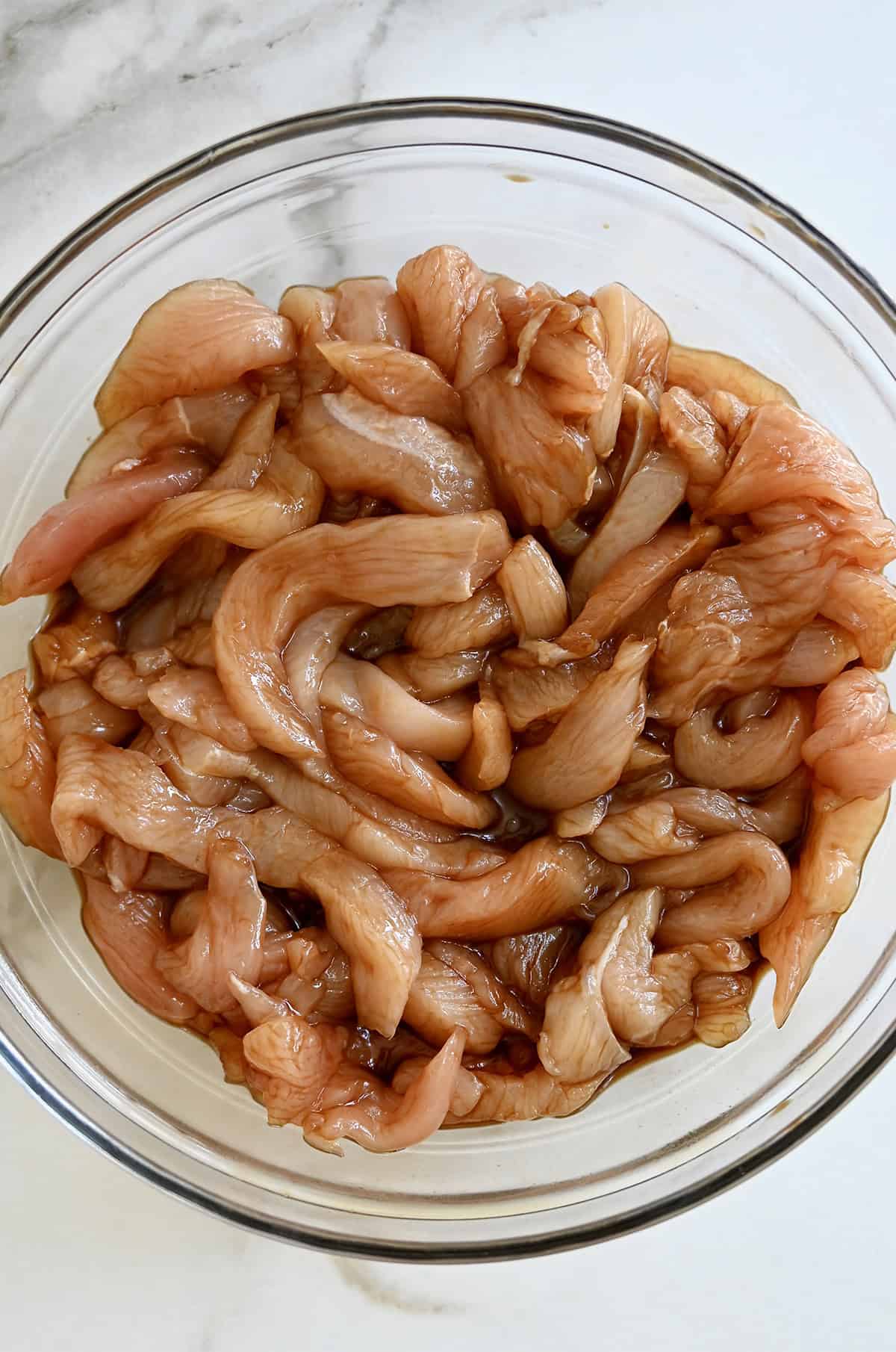
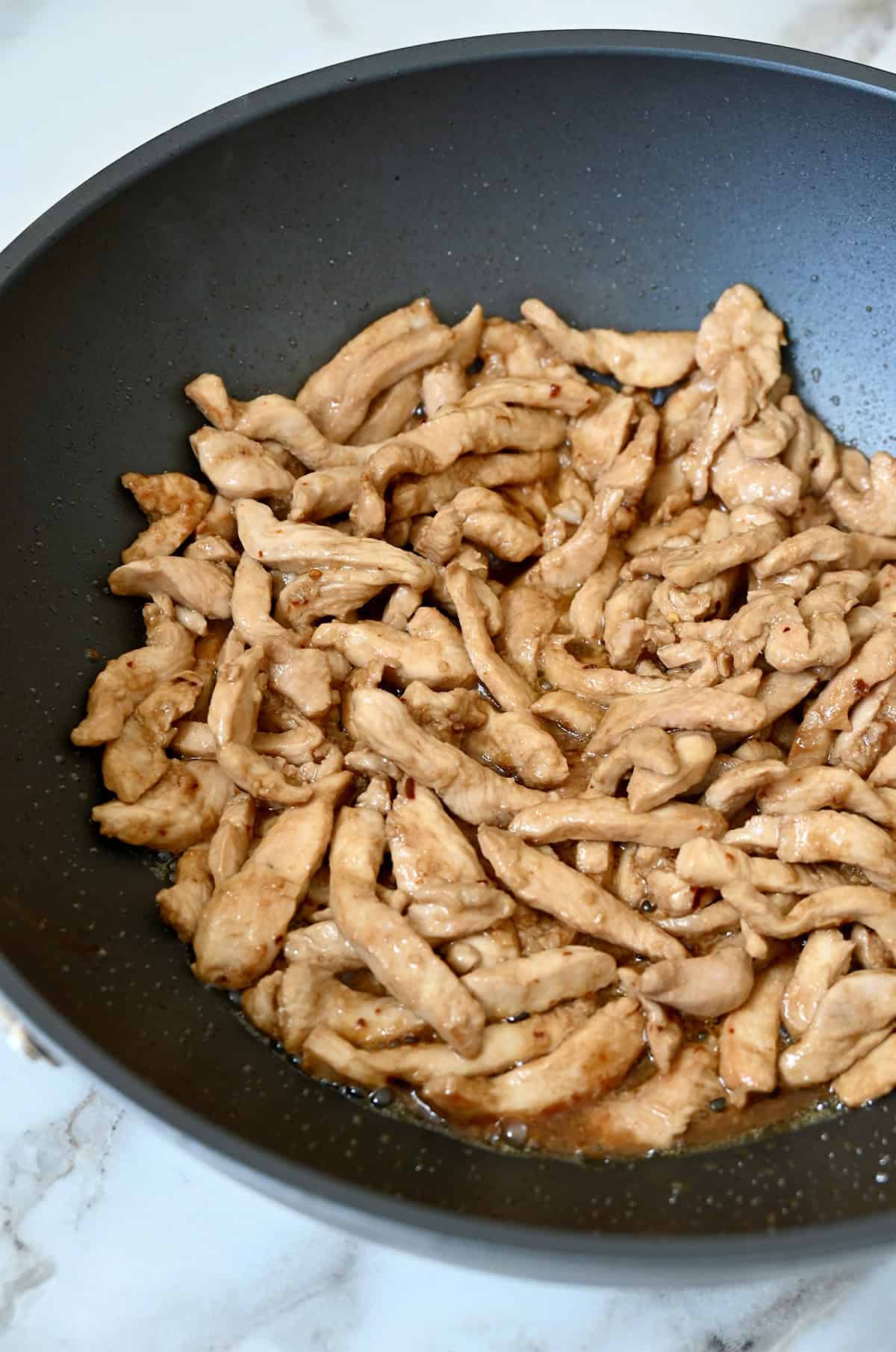
- Add the noodles to the pan then pour in the prepared sauce. Bring the sauce to a boil, and using two flat spatulas, lift and turn the noodles to combine all of the ingredients. Don’t stir the noodles too vigorously or they’ll break. Continue cooking the noodles for 1 to 2 minutes until the sauce thickens slightly, then add the bean sprouts and cook for 1 more minute. The noodles are fully cooked when they are chewy and no longer crunchy.
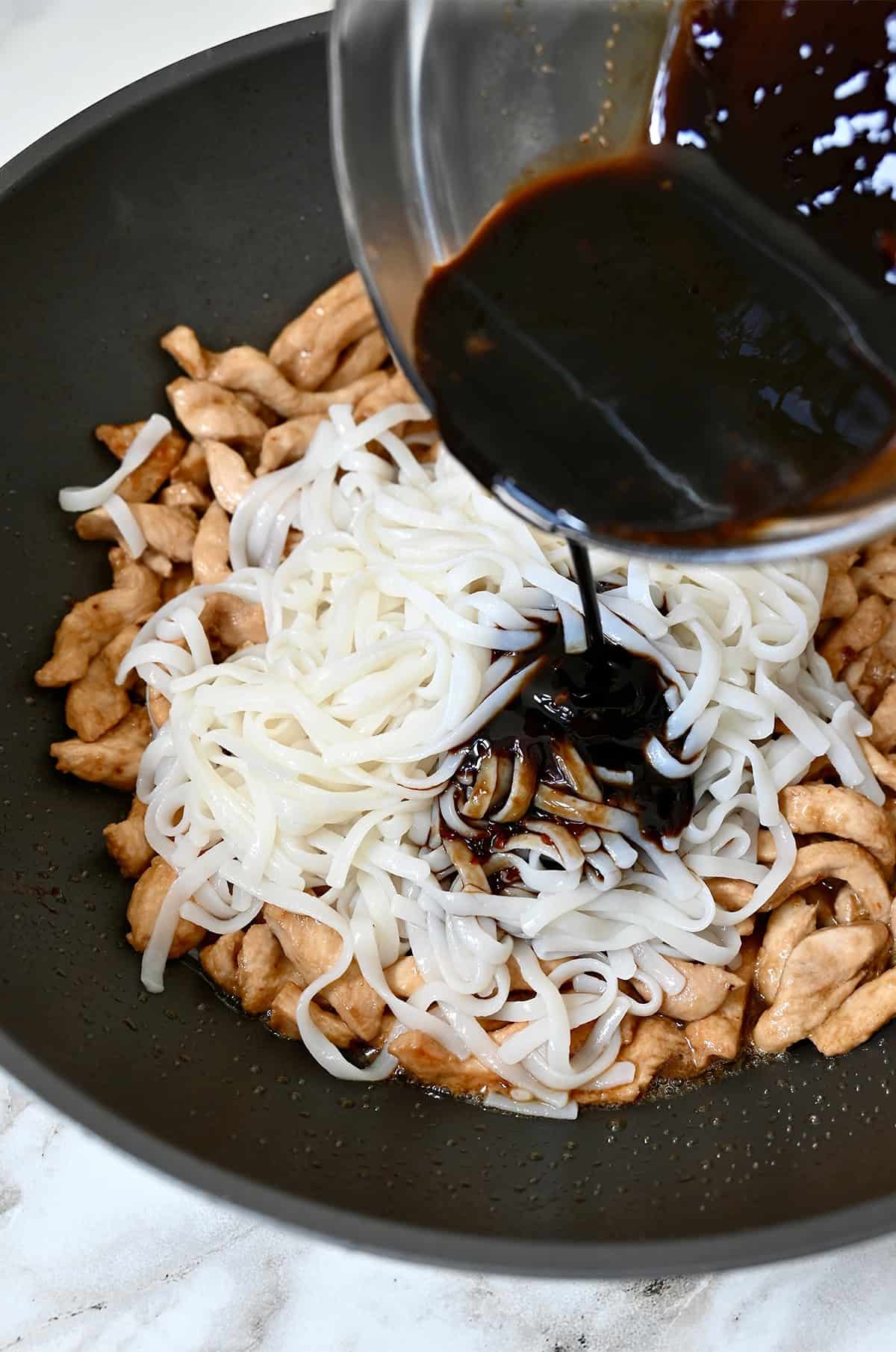
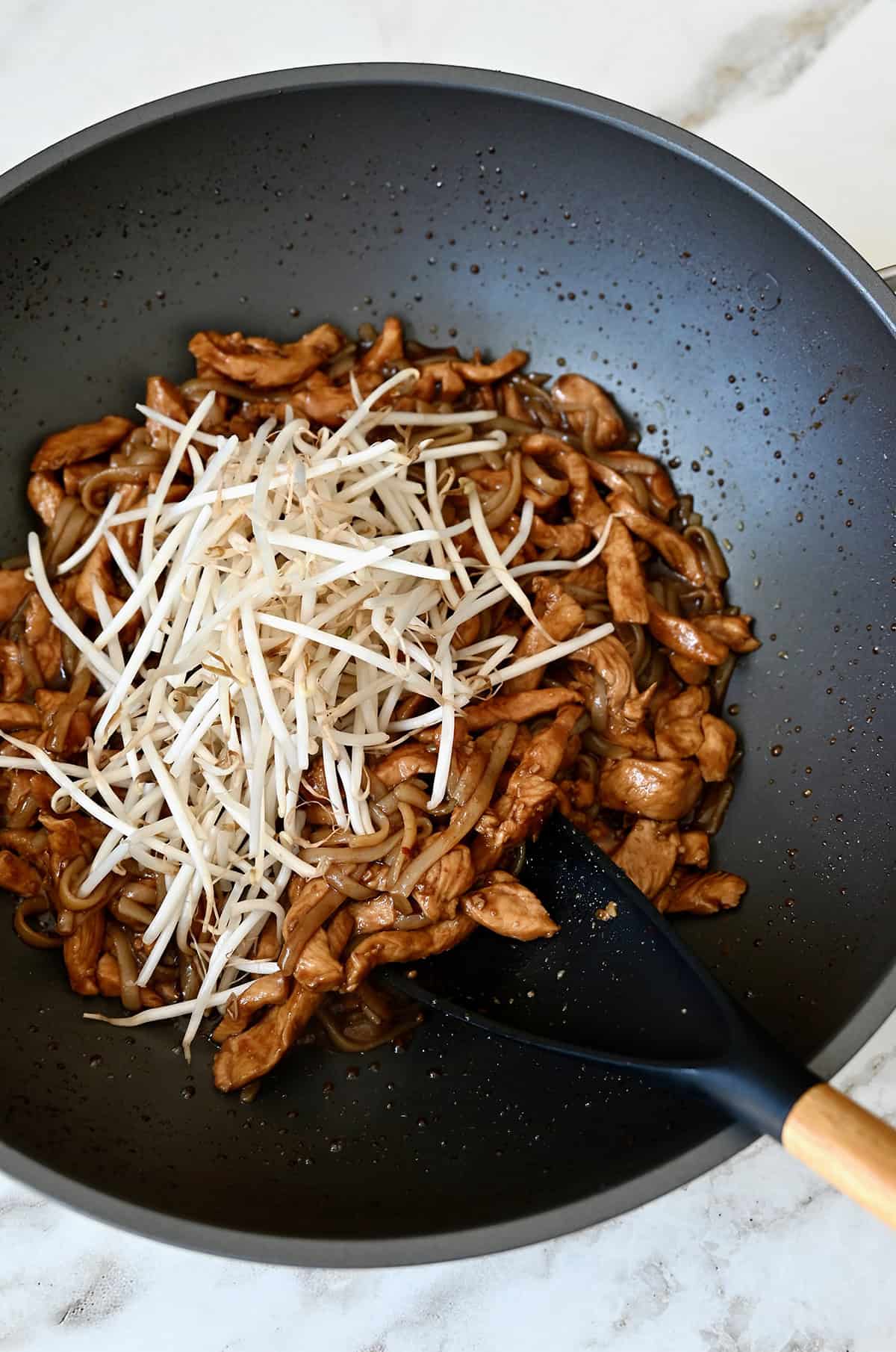
- Transfer the noodles to serving dishes and garnish with your favorite Pad Thai toppings!
And don’t forget the Thai Coconut Sticky Rice with Mango for dessert!
- My #1 tip for stir-fry success at home: Mind your mise en place. Stir-frying is a super-fast cooking method, which means it’s crucial to have all your ingredients prepped and within reach before you fire up the flames.
- No rice noodles? No problem! Just swap in your noodle of choice.
- A majority of the specialty ingredients in this recipe can be found in the Asian aisle of most supermarkets. My preferred brand of rice noodles is Annie Chun’s Pad Thai Noodles.
- It’s important to bring the sauce to a boil so that it will thicken enough as it cooks with the noodles.
- The fish sauce is what really gives pad Thai its characteristic taste, so substituting anything for it will compromise the flavor.
- Swap in your favorite protein. Shrimp/prawns are another popular choice for Pad Thai, but tofu, beef and even pork all work well in this recipe.
Common Questions
Tamarind has a very distinctive sweet and sour flavor. It is traditional in pad Thai, but if you’re aren’t able to find it, you can substitute in a mix of vinegar or lime juice and brown sugar (in addition to the brown sugar listed in the recipe). For this recipe, substitute in 1 Tablespoon of lime juice mixed with 2 teaspoons brown sugar.
Store leftovers in an airtight container in the refrigerator for up to 3-4 days. Reheat gently in the microwave or on the stovetop, adding a splash of water or chicken stock to prevent the noodles from drying out.
Absolutely! Store it in an airtight container in the refrigerator for up to a week. Just give it a good stir before using to ensure all the flavors are well incorporated.
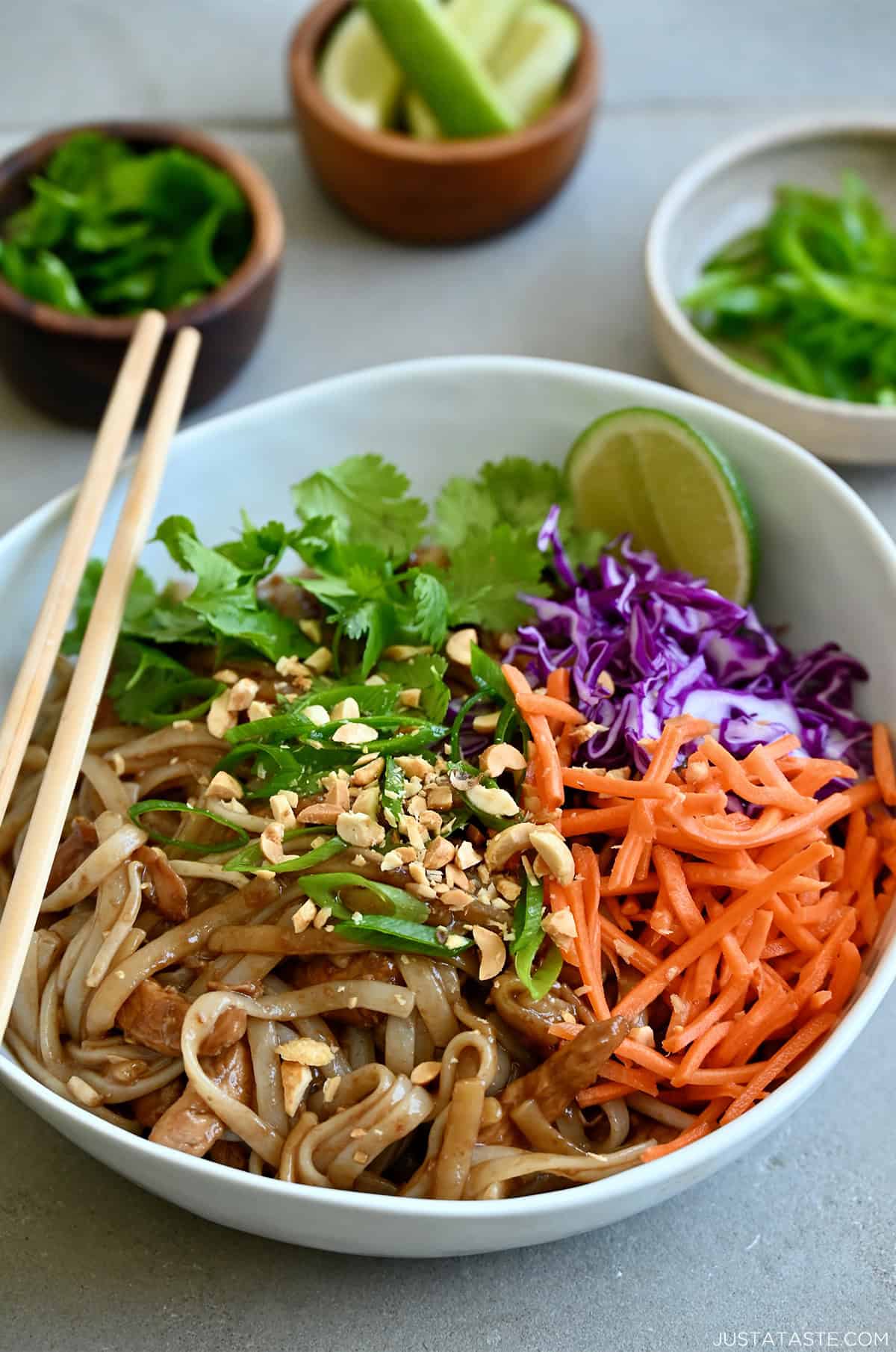
- Thai Spring Rolls with Peanut Sauce
- Thai Chicken Pasta Salad
- Thai Beef Salad with Lime Dressing
- Thai Coconut Pumpkin Soup
- Pad See Ew

Ingredients
For the sauce:
- 1 1/2 Tablespoons tamarind concentrate/paste
- 1/4 cup fish sauce
- 1/2 teaspoon Sambal Oelek (chili sauce)
- 1/3 cup packed light brown sugar
- 1/8 teaspoon fresh black pepper
For the noodles:
- 8 ounces Thai rice noodles
- 2 large boneless skinless chicken breasts
- 1 teaspoon cornstarch
- 3 Tablespoons low sodium soy sauce
- Vegetable oil, for stir-frying
- 4 cloves garlic, minced
- 1/4 teaspoon crushed red pepper flakes
- 2 cups fresh bean sprouts
- 1/4 cup chicken stock
- 1/2 cup sliced carrots, for garnish
- 1/2 cup shredded red cabbage, for garnish
- 1/4 cup cilantro leaves, for garnish
- 1/4 cup sliced scallions, for garnish
- 1/3 cup roughly chopped peanuts, for garnish
- Lime wedges, for garnish
Instructions
Make the sauce:
- In a medium bowl, whisk together the tamarind concentrate with ½ cup warm water. Whisk in the remaining sauce ingredients. Set aside.
Make the noodles:
- Fill a large pot with hot water. Add the rice noodles and cover the pot, allowing them to soak and soften for 8 to 10 minutes, or until they’re barely al dente. (Alternately, cook the noodles according to the package instructions.) The noodles will be stir-fried so do not overcook them at this point.
- Drain the noodles and rinse them with cold water to prevent them from sticking together.
- Cut the chicken breasts into thin, 1-inch slices. Place the chicken in a medium bowl. Whisk together the cornstarch with the soy sauce then pour it over the chicken, stirring to coat.
- Heat a wok or large nonstick sauté pan over medium-high heat. Add 1 to 2 tablespoons of vegetable oil then add the minced garlic and crushed red pepper flakes and cook, stirring continuously, for 30 seconds until the garlic is golden brown and fragrant. Add the chicken to the pan (including all liquids), and cook, stirring frequently until it is no longer pink. Add 1 to 2 tablespoons of chicken stock at a time to the pan while the chicken is cooking to prevent it from drying out. (You may not use the entire ¼ cup of chicken stock.)
- Add the noodles to the pan then pour in the prepared sauce. Bring the sauce to a boil, and using two flat spatulas, lift and turn the noodles to combine all of the ingredients. (Don’t stir the noodles too vigorously or they’ll break.) Continue cooking the noodles for 1 to 2 minutes until the sauce thickens slightly, then add the bean sprouts and cook for 1 more minute. The noodles are fully cooked when they are chewy and no longer crunchy.
- Transfer the noodles to serving dishes and garnish with the sliced carrots, shredded red cabbage, cilantro, scallions, peanuts and lime wedges.
Kelly’s Notes
- A majority of the specialty ingredients in this recipe can be found in the Asian aisle of most supermarkets. My preferred brand of rice noodles is Annie Chun’s Pad Thai Noodles.
- No rice noodles? No problem! Just swap in your noodle of choice.
- It’s important to bring the sauce to a boil so that it will thicken enough as it cooks with the noodles.
- Make sure you have all of your ingredients prepped and ready to go before you start cooking. This is a fast recipe that comes together in less than 10 minutes once the garlic hits the pan.
- Swap in your favorite protein. Shrimp/prawns are another popular choice for Pad Thai, but tofu, beef and even pork all work well in this recipe.
- ★ Did you make this recipe? Don’t forget to give it a star rating below!
Nutrition
Shoutout
Did you try this recipe?
Share it with the world! Mention @justataste or tag #justatasterecipes!
This post may contain affiliate links.
Recipe by Kelly Senyei of Just a Taste (inspired by Darlene Schmidt). Please do not reprint this recipe without my permission. If you'd like to feature this recipe on your site, please rewrite the method of preparation and link to this post as the original source.
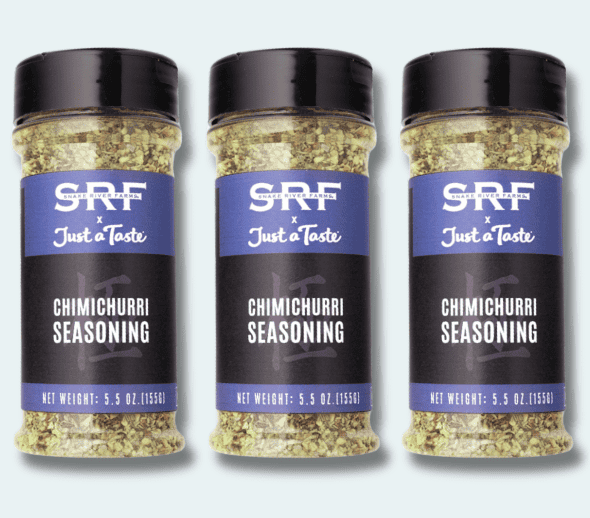
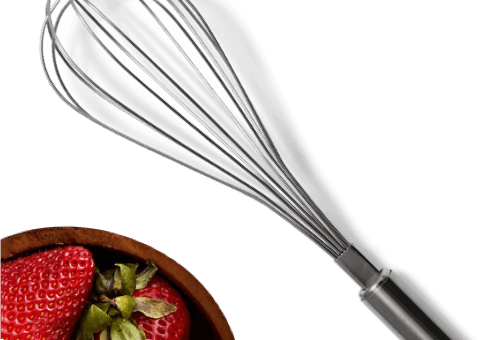

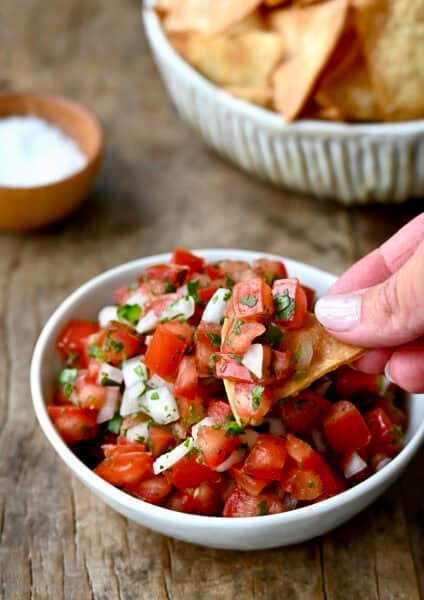
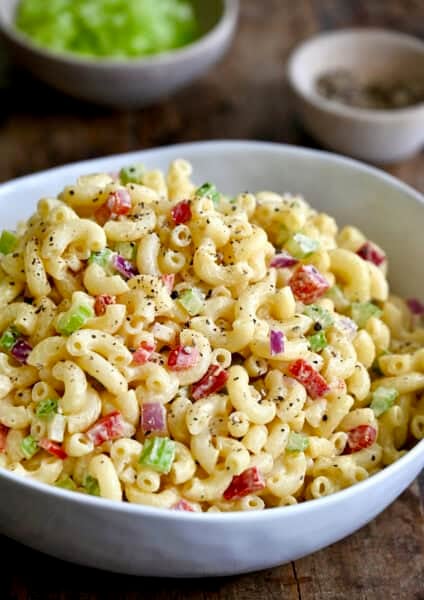
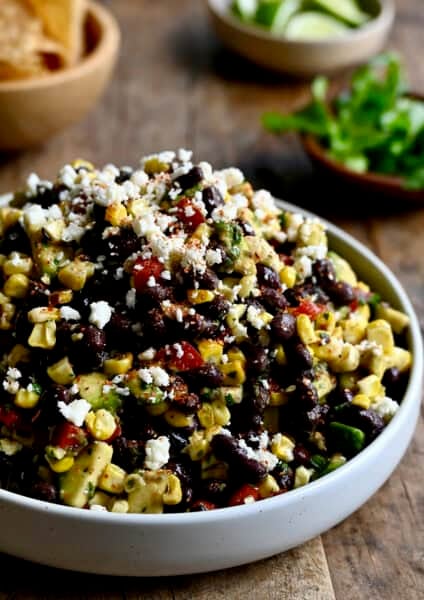
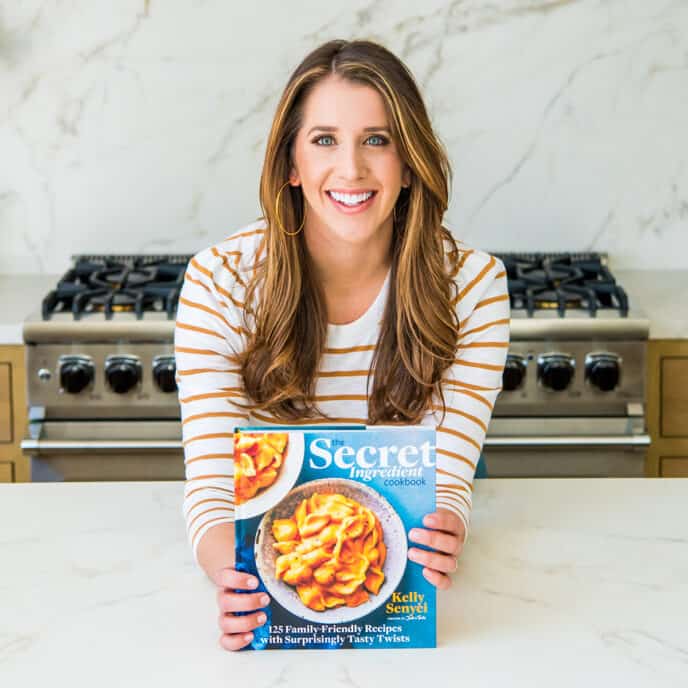
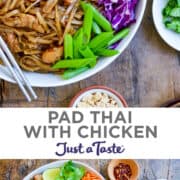
Going to use this recipe for the second time now! We really love the taste and varieties you can make using the garnishes. Thanks for sharing this recipe, it is going in my recipe notebook! :)
Woohoo! I’m so happy you’ve been enjoying the recipe, Eve!
I’ve been making this recipe for years. I use kelp noodles though. It’s a wonderful recipe!
I’m so thrilled you’ve been enjoying it, Amanda!
Absolutely loved it!! So delicious. I added a little bit more cornstarch/soya and end to help thicken up a bit more. I will use this recipe over and over. Family loves it.
Thrilled you enjoyed the recipe, Kim!
This is a great recipe but I wish I had added the sauce and let it thicken a bit before I added the noodles. It took too long and my noodles ended up getting overcooked. Also, I feel like it needs more noodles, but that is probably just me :)
Thanks so much for your note, Brandi! I’m glad you enjoyed the recipe :)
I’ve made this recipe 3 times. WONDERFUL flavor and pretty simple. Thank you!!!
You are so welcome, Taylor! I’m thrilled you’re enjoying the recipe. :)
Where can I find tamarind paste concentrate?
Check out the Asian food section of most major grocery stores!
what can i use to replace the fish sauce due to allergies
Hi Tammy – The fish sauce is what really gives pad Thai its characteristic taste, so substituting anything for it will compromise the flavor. I’ve read that Worcestershire or a mixture of soy sauce and shiitake mushroom stock could work. If you try either of those, let me know how it turns out!
I love this recipe and I’ve been making it like once a week since I discovered it! Super easy and so delicious! I never thought I would ever use up a whole bottle of fish sauce, but I’m on my second!
So glad you’re enjoying the recipe, Amie! :)
I also have eaten many pad Thais, wether being home made or from the Restraunt and this sauce is perfect. One of my Thai friends told me soak the noodles in cold water for at least 2 hours and this will help them to not become soggy or dry. I find it comes out a lot better.
So glad you enjoyed the recipe, Julia!
Hi Kelly,
This is a favorite at our house! I’m a dietitian and I feature some of my favorite healthier recipes on my website Nutritionistics.com. I’ve posted your pad thai there with a link to your website. Thanks so much for sharing!
So glad you’re enjoying the recipe, Mandy!
I made this recipe once as written and unfortunately didn’t love it. It seemed too overpowering (especially on the salt and tamarind). However, I just made it a second time with the following adjustments and found it to be perfect! First, I cut the tamarind and fish sauce in half. I also added chopped shallots with the garlic. And I added scrambled egg (1 per serving you are making) at the stage after chicken is cooked, before adding noodles and sauce. Plus I only attempted cooking 2 serving at a time instead if 4 – this made the whole process more manageable. These adjustment really worked for me so I thought I’d share!